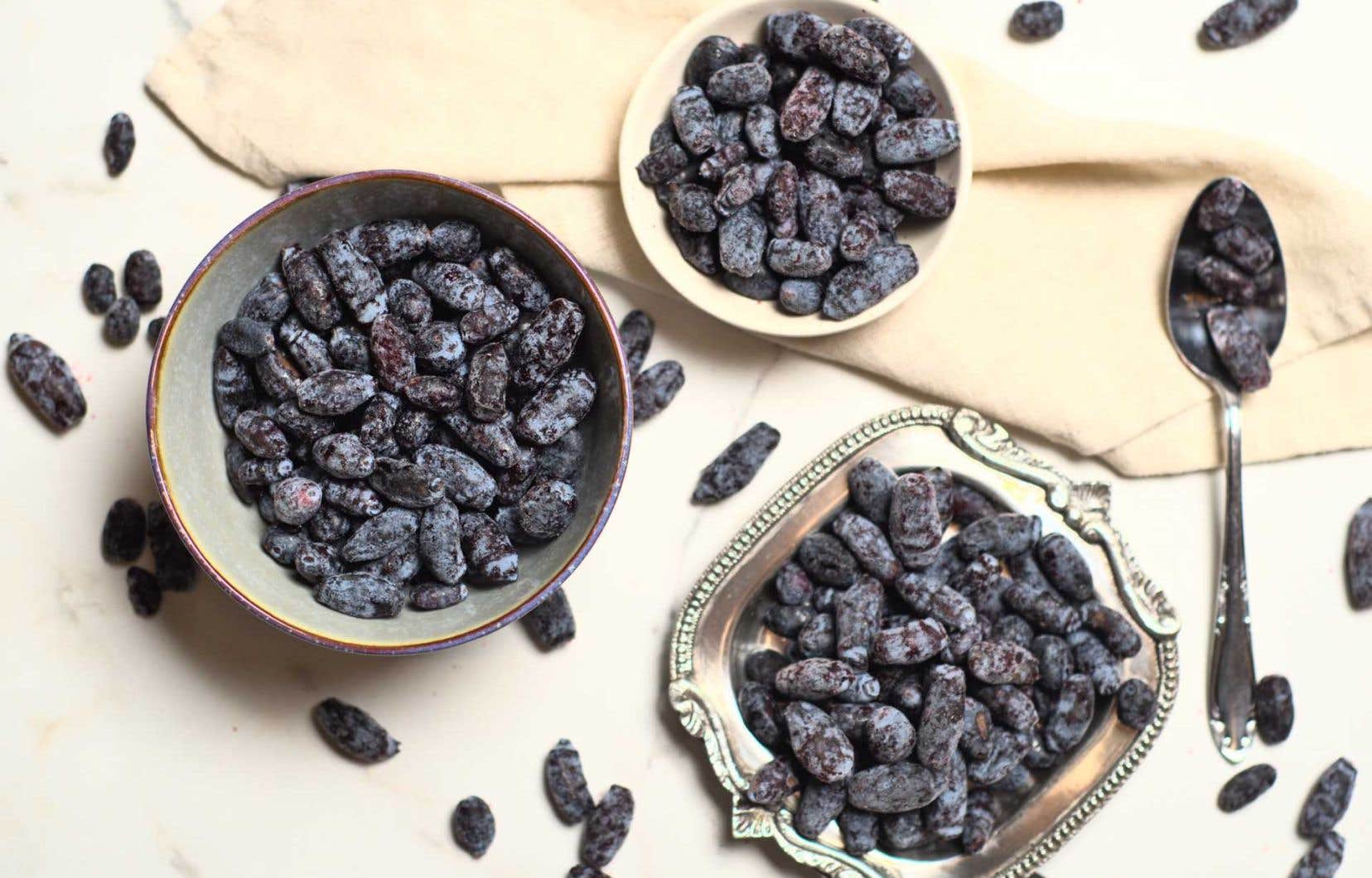This text is part of the special Pleasures notebook
Whether native or emerging, frozen berries from Quebec allow us to enjoy a wide variety of local fruits all year round. Practical and ready to use, they bring a pleasant and fragrant touch to your dishes.
Marie-Philippe Mercier Lambert loves Nordic flavors. With her partner, Kevin Lavoie, since 2021 she has been marketing all kinds of products, including frozen berries, under the Racines boréales brand. Some have the status of native plants, others of emerging crops. This is the case of haskap and sea buckthorn, two varieties more recently introduced from Europe and Asia for the benefit of local eaters.
“Happy berries are the perfect balance of sweet and tangy. It is a very juicy berry, from which a juice can be extracted which is used in smoothies or sauces to accompany game. Its taste is reminiscent of a mixture of blueberries and raspberries. » As for sea buckthorn, it surprises with its sharp acidity, roughly comparable to that of lemon. The yellow or orange berry can therefore enhance the flavors of cocktails, vinaigrettes or chutneys. Its sunny, almost tropical scent takes us far from the bitter cold of Quebec.
Among the small native fruits, aronia and lingonberry are reminiscent of cranberries. They are found abundantly in nature, but the varieties selected by Racines boréales, Marie-Philippe and Kevin unearthed them from pioneering companies: Aronia Superfruits, in Princeville, and Les Airelles des Frères, in Lac-Etchemin. Two producers who have made it their mission to promote Nordic local foods.
“Aronia is a magnificent fruit, extremely invigorating, which reveals its complexity once cooked,” says Marie-Philippe Mercier Lambert. The cranberry will be a little less astringent than the cranberry and sweeter too. It replaces it well, especially for making jellies. »
Unlike other berries, Saskatoon berries are harvested in the wild. Called “little pear” because of its delicate and fruity notes, it lends itself well to homemade confectionery. “But you have to find it before the birds, who are fond of it! »
Versatile ingredients
On their website, the couple offers different ways to prepare them. For the moment, the clientele is mainly made up of restaurateurs who make little wonders from them, and processors who add them to their beers and spirits. But their growing popularity among consumers is evident.
“There are more and more people looking for products that they have seen in a recipe. When we see Ricardo’s recipes with Nordic and local foods, it’s a sign that Quebecers are adopting them, notes the co-founder of Racines boréales. What I notice is that those who already knew about these products are very happy to have a place to get them. You can buy a lime on every street corner, but finding sea buckthorn berries, for example, is really difficult. »
The young marketing director dreams of the day when we will have tamed the fruits that grow on our territory. For those who would like to integrate them into their diet, she suggests not being intimidated by the unknown they represent. “There is a beautiful diversity of flavors and textures in these berries which make them very versatile for cooking. You can defrost them and add them almost anywhere you would put berries: in jams, jellies, desserts, in mixology. Everything is possible ! ” she says. Nothing better, therefore, to break the winter routine and vary your consumption of local fruits.
For the more adventurous
Discovering the northern bays can be an opportunity to reconnect with First Nations culture. This is what Elisabeth Cardin, former owner of the Manitoba restaurant in Montreal, offers us. “Native people associated fruits with savory dishes, rather than desserts. It’s something we’ve experimented with a lot,” she says.
As the spawning period coincides with the season of several berries, we can exploit the combination of fish and berries to create a hyperlocal dish. Suvalik, for example, is an emulsion of eggs, fish, oil and fresh berries. On the same principle, Manitoba served arctic char fillet with yellow beets, and accompanied it with eggs mixed with Saskatoon berries.
Once dried, small fruits, such as aronia or Saskatoon berry, can also be used in the composition of pemmican, cri pimikan, or “prepared fat”. “Pemmican is the ancestor of energy balls! Big game hunters went with this preparation of dried or smoked meat, animal fat and dehydrated berries. »
Some places to get them
This content was produced by the Special Publications team at Duty, relating to marketing. The writing of the Duty did not take part.
